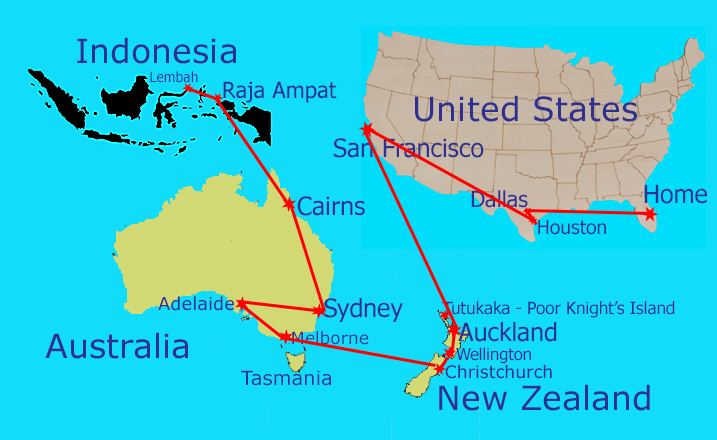Galloping to the Galapagos - Chapter Four
Tuesday, December 1st

We wake up next to the sheer rock wall of Isabela Island, Vicente Roca Point. This is the largest island of the Galapagos. You can just make out The Bonita Yacht in the far right lower corner.
Author’s note: One of the challenges of this trip was packing. Quito is cool with an average temperature of about 55 to 60. Even though it’s on the Equator, the altitude keeps the temperatures low. The Galapagos Islands are at sea level and warmer, but the temperatures were still in the low to high seventies even on sunny days. Because we were visiting on the edge of the rainy season, many days were overcast. Rentals snorkeling equipment was available on the Bonita, but only one mil suits. I get cold easily and have trouble fitting a mask so I brought my own gear including a three mill wetsuit.
The zodiacs allowed us to get close to the towering rock walls and an accessible cave on Isabela Island. The colors inside the cave were amazing!
We proceed along the walls to the rocks where all the Galapagos critters were hanging out.
Sea lions, Flightless Cormorants, Blue Booted boobies, Frigetbirds and Swallow-tailed Gulls abound.
Author’s note: There is one extremely inquisitive and somewhat aggressive Flightless Cormorant. It nearly fell off its rock to get into the water and swim out to investigate our zodiacs!
Author’s note: There are Cormorants in other places in the world, but the Flightless Cormorant is an evolutionary anomaly of The Galapagos. It flew to the Galapagos but discovered the food was in the water, so eventually its wings diminished in size until now it is flightless. only swiming and diving for food.
This picture is typical of the Galapagos. Initally, you see nothing, but on closer examination there are crabs, Marine Iguanas and more.

After the zodiac ride there is snokeling. There was lots of particulate in the water. This is great nourishment for the animals that live in the Galapagos, but the bane of the photographer, acutely evident when snorkeling.
Lunch begins with a tomato based ceviche – different from the day before, but again served with plantain strips and popcorn.
Early afternoon activities include standup boards and kayaks. I skipped this activity to rest, but Tom saw a Galapagos Penguin.

Afternoon finds us next to Fernandina. The zodiacs deliver us to a path occupied by Sea Lions. With a little encouragement they move aside. There were hundreds of Marine Iguanas and many Land Iguanas.


The highlights were a Galapagos Hawk and a Cormorant with its nestling. Wilo, our guide, shares that he has only seen a Cormorant fledgling twice in his life.
The stunning photograph below of the Cormorant with its fledgling is from an other guest on the Bonita, Iñigo Diego-Fernandez.

As we explored Fernandina we were delighted by the Sea lions!
I enjoy a close encouter of my own.
As we say goodby to Fernandina the Sea Lion pups make us long to stay.




















